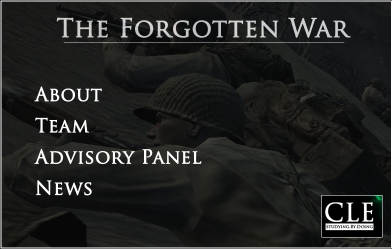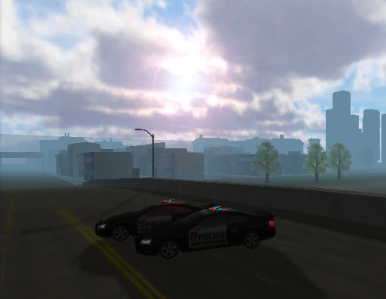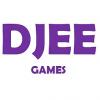Introduction
Those of you not familiar with Demo Night, take a look back at Demo Night VII, and from there you can continue on back through to Demo Night V. Here's the skinny if you're short on time: Run by the NYC chapter of the International Game Developer's Association, Demo Night was founded in 2004 and has since become a bi-annual event where developers from all over the NYC area showcase their games currently under development for everyone to see. In presenting their games, they also offer insight for the rest of the developers in attendance. This isn't a media event, it's a chance for developers to gather and share.
You'll see, if you look at past coverage, that we've had the good fortune to partner with the crew from Heavy Melody, who provided video coverage of the event. Alas, this time around they did not have a camera available and of the two of us, only Oluseyi was able to attend. So while the coverage for this Demo Night isn't of the caliber it usually is, nonetheless we give you the six games presented, some fun facts and a brief report on each from Oluseyi.
The Forgotten War
 Creo Ludus Entertainment, creators of The
Forgotten War, is actually a student collective, albeit with extensive involvement by professional game developers. A mod for Company of Heroes, lead technical designer Jason Chin spoke on the
high production values aimed for, including rendered cutscenes and elaborate scripted sequences, as well as an original score composed by a well-known game industry professional. Unfortunately, the
rendered movie Jason brought with him wouldn't play video on the available laptop, so we didn't get to see for ourselves.
Creo Ludus Entertainment, creators of The
Forgotten War, is actually a student collective, albeit with extensive involvement by professional game developers. A mod for Company of Heroes, lead technical designer Jason Chin spoke on the
high production values aimed for, including rendered cutscenes and elaborate scripted sequences, as well as an original score composed by a well-known game industry professional. Unfortunately, the
rendered movie Jason brought with him wouldn't play video on the available laptop, so we didn't get to see for ourselves.
Fortunately, there were no other technical hiccups.
Game Data
The Forgotten War is a single player campaign for Relic's critically acclaimed Company of Heroes. Take on the role of Captain Westing, and command a small, elite and sidelined unit to lead your men on one of the most daring, successful - and illegal - operation in US military history to turn the tide of the invasion of France.
Lost in the chaos of the D-day landing, Westing and his elite force are foolishly ignored by army brass and left to die on the beaches without support or reinforcements. You must fight your way to the interior and link up with underground French resistance! Only by linking your units fast strike stealth capabilities with their on the ground intelligence will give the allies a shot at breaking through Hitler's defensive line.
Company: Creo Ludus Entertainment
Release Date: August 15th, 2008
Platform(s): Company of Heroes, PC
Total Development Time: 11 months
Full Time Team Size: 18 Students/ 2-3 CLE Leads
Total Team Size: 28
Budget: $0, countless egos and carpalled tunnels
Fun Fact: The concept for the project, bringing together pro dev's to help a game design class release a professional quality polished narrative mod project-- was presented by Coray (IGDA NJ
Chapter Coordinator) to a collection of game and tech pro's on a Hoboken rooftop over cigars and beers on a lovely spring afternoon in Hoboken last year.
Discarded Online
 Malachi Griffie and Andrew Pellerano of Urbansquall
Corporation were next, demoing their multiplayer online beat 'em up card game (yes, you read that right) with role-playing elements. MOBEUCGRPG. The game was both creatively and technically
interesting: the concept is to equip your character with skills distinct from visual appearance, so players don't have to make tradeoffs between appearance and performance, and then fight
predominantly cute characters; the technology is built with Adobe Flex and includes both skeletal animation and cut-outs, giving a 2D game the tremendous variability of texture mapping in 3D,
but then rendering all the animation poses into sprites to accommodate the limited horsepower available under the Flash platform on the majority of user machines.
Malachi Griffie and Andrew Pellerano of Urbansquall
Corporation were next, demoing their multiplayer online beat 'em up card game (yes, you read that right) with role-playing elements. MOBEUCGRPG. The game was both creatively and technically
interesting: the concept is to equip your character with skills distinct from visual appearance, so players don't have to make tradeoffs between appearance and performance, and then fight
predominantly cute characters; the technology is built with Adobe Flex and includes both skeletal animation and cut-outs, giving a 2D game the tremendous variability of texture mapping in 3D,
but then rendering all the animation poses into sprites to accommodate the limited horsepower available under the Flash platform on the majority of user machines.
Urbansquall's workflow leverages the open source and free (beer) tools now available for the Flash platform - the FlashDevelop IDE, the Flex SDK - alongside the traditional tools, saving Urbansquall considerably on site licenses (only two Flash Professional site licenses for artists).
Game Data
Discarded is a multi-player online beat 'em up card-collecting game infused with role-playing elements (we're still working on the genre acronym). It runs entirely in a web browser with no download required. Players create a character and equip cards to give themselves weapons, special abilities, and a unique appearance. Then they join together in groups of up to 4 players to take on a variety of missions; all with interesting and adorable creatures to bludgeon. Throughout the game players win achievements, which award points and new cards, and allow them to advance their character and take on ever more powerful enemies... and so, the cycle of beating continues.
Company: Urbansquall Corporation
Public Beta: July 15th, 2008
Platform(s): Web browsers with Flash Player 9 or higher
Total Development Time: 9 months
Full Time Team Size: 4
Total Team Size: 4 + contractors
Budget: $90K
Fun Fact: Designing a massively-multi-player online game, with all its inherent networking code, a never-done-before skeletal animation system, thousands of unique pieces of art... and
designing it all from scratch... with 4 people... is... fun.
The Pini Society: The Remarkable Truth
 The Pini Society comes from a somewhat more established
developer: Arkadium, creator of over 200 casual and advergames. Jessica Rovello, President and Design Lead, spoke first about her own disconnect to the common branding messages and themes wrapped
around casual games on portals - cute, furry animals, fantasy settings involving fairies or pirates or somesuch, all ostensibly because "that's what the demographic (educated women 35 and over)
wants". She said she wanted something with a little more substance to it, and that all her friends also in that demographic said the same. This served as motivation to present something
different.
The Pini Society comes from a somewhat more established
developer: Arkadium, creator of over 200 casual and advergames. Jessica Rovello, President and Design Lead, spoke first about her own disconnect to the common branding messages and themes wrapped
around casual games on portals - cute, furry animals, fantasy settings involving fairies or pirates or somesuch, all ostensibly because "that's what the demographic (educated women 35 and over)
wants". She said she wanted something with a little more substance to it, and that all her friends also in that demographic said the same. This served as motivation to present something
different.
The Pini Society is the story of a secretive organization that has conducted some of the greatest archeological expeditions and discoveries, and leveraged incredible artifacts to gain access to tremendous power. And it's a shape matching game. The production values are pretty high, and there are cutscenes and auxiliary materials - in-game journals, profiles of real explorers, a companion website fleshing out the story of the organization (with no mention of the game). The release of the game benefited from synchronization with the release of the latest Indiana Jones movie, which Arkadium took as an opportunity to promote the game, reasoning that people interested in Indy might also be interested in an archaeology-themed casual game.
Game Data
The Pini Society: The Remarkable Truth is the story, told through a new game, of one of the world's most elite and secretive organizations. Founded in 1854 and only recently re-discovered, The Pini Society was responsible for the greatest archeological finds of the last 200 years. Through the game and with your help, we hope to uncover more of the society's secrets.
Company: Arkadium
Release Date: July 2008
Platform(s): Windows 2000, NT, XP, Vista
Total Development Time: 2 years
Full Time Team Size: 4
Total Team Size: 15
Budget: $200K
Fun Fact: A percentage of the game download fee proceeds will go towards the preservation of an endangered historic site.
The Blackwell Convergence
 Dave Gilbert of Wadjet Eye Games
presented The Blackwell Convergence, the third game in his "Blackwell" series of adventure titles. Being a sequel to a game that was shown at previous Demo Nights, Dave didn't dwell on the
concept, production process or technology behind the game. Instead he talked about knowing your audience. Having been an adventure gamer and steeped in the adventure gaming community, particularly
the one centered around Adventure Game Studio, he said he had automatically assumed that his games would appear to stereotypical "adventure gamers" - male, late teens to late twenties, predominantly
white... Instead he discovered that many of them welcomed his games but didn't play or purchase them. With two previous games in the series, he looked at his sales data, with a particular emphasis on
repeat buyers, and discovered that his audience - his real audience - was educated women, 35 and over... "casual gamers."
Dave Gilbert of Wadjet Eye Games
presented The Blackwell Convergence, the third game in his "Blackwell" series of adventure titles. Being a sequel to a game that was shown at previous Demo Nights, Dave didn't dwell on the
concept, production process or technology behind the game. Instead he talked about knowing your audience. Having been an adventure gamer and steeped in the adventure gaming community, particularly
the one centered around Adventure Game Studio, he said he had automatically assumed that his games would appear to stereotypical "adventure gamers" - male, late teens to late twenties, predominantly
white... Instead he discovered that many of them welcomed his games but didn't play or purchase them. With two previous games in the series, he looked at his sales data, with a particular emphasis on
repeat buyers, and discovered that his audience - his real audience - was educated women, 35 and over... "casual gamers."
First, this was a shock to him. Second, he said, by paying attention to the sites and communities where they gathered and discussed, he realized that they were having difficulty playing the game. Despite liking the game enough to purchase it, and its sequel(s), they were not steeped in adventure game conventions and therefore often didn't know how to perform actions that his assumed audience (adventure gamers) would take for granted - dragging an item from the inventory onto an object in the scene to "use with," for instance.
Armed with this information, Dave said he set out, with The Blackwell Convergence, to include an optional tutorial over the early stages of the game to introduce these key concepts and control mechanisms. He then proceeded to show us the tutorial in progress. Running out of time, he stated that he hasn't toyed with the actual interface, but that he hopes the tutorial greatly increases user satisfaction.
Game Data
A new film opens to rave reviews, despite its bloody history. A beautiful uptown office remains unoccupied, despite its prime location. A downtown artist berates himself for selling out, while a Wall Street investor congratulates himself on a job well done. Just normal life in the big city? Or is somthing more sinister binding these events together? Bizarre connections are a dime a dozen for the Blackwell family, but just how far back to they go? Medium Rosangela Blackwell and her spirit guide Joey Mallone are about to find out.
Company: Wadjet Eye Games
Release Date: Fall 2008
Platform(s): Windows
Total Development Time: 1 year
Full Time Team Size: 4
Total Team Size: 4
Budget: $8K
Fun Fact: Sections of the current and previous Blackwell games take place on Roosevelt Island. Before 1921, Roosevelt Island was called Blackwell Island. Dave wishes he knew this earlier, so
he could take credit for being clever.
The DWI Learning Game/Experience
 The DWI Learning Game/Experience differs substantially from the games typically presented at Demo
Night. It's an educational game sponsored by the government of the City of Westchester, NY currently in pilot programs at local schools. If successful, it will then be adopted by schools all over the
state of New York. It aims to drive home the dangers of drinking and driving by placing students in a simulated drunk driving situation. The game starts off in a street course where the students
pilot the test car in accordance with road rules and earn points for obeying (an audience member pointed out that, normally, points on your license are a bad thing!), which gives them a nicer
car in the subsequent simulation area. Then, a social scenario is presented in which the student chooses how many drinks he or she has had and over what timespan. Based on a statistical model,
vision, braking ability and control are degraded to approximate the effects of alcohol.
The DWI Learning Game/Experience differs substantially from the games typically presented at Demo
Night. It's an educational game sponsored by the government of the City of Westchester, NY currently in pilot programs at local schools. If successful, it will then be adopted by schools all over the
state of New York. It aims to drive home the dangers of drinking and driving by placing students in a simulated drunk driving situation. The game starts off in a street course where the students
pilot the test car in accordance with road rules and earn points for obeying (an audience member pointed out that, normally, points on your license are a bad thing!), which gives them a nicer
car in the subsequent simulation area. Then, a social scenario is presented in which the student chooses how many drinks he or she has had and over what timespan. Based on a statistical model,
vision, braking ability and control are degraded to approximate the effects of alcohol.
Taking us through the game, VRShell founder Mark Grob began the DWI simulation and the first attempt to veer slightly to pull away from the curb evoked surprise from the entire audience at the blurriness and low visibility. As he spoke about the brake degradation, he missed a stop sign and slammed into the side of a passing vehicle. The audience broke out in laughter, but sobered up immediately when the game's emotional payload hit: every crash is linked to a real life drunk driving fatality, most with video messages from family members of the victims.
The DWI Learning Game is built on VR technology, with support for stereoscopic vision, and uses the Unity 3D engine
Game Data
The DWI Learning Game/Experience is designed to bridge the serious nature of Driving Under the Influence (DUI) related education and content into an interactive media like a video game. The simulation/experience is divided into the Pre-game and Post-game formats. The Pre-game format is designed to engage the student to want to learn about the topic of DUI. The game design is intended to draw the student into the world of DUI and experience the effects based on the choices they make (number of drinks, etc.). Once they make their choices they live them out through the driving simulation. Once the driving simulation has ended; by crash or by reaching the logical end point; they are brought into the Post-game format. The Post-Game format incorporates a standard educational approach for teaching the real life facts to the student and provides a method of feedback to the Instructor.
Company: VRshell LLC
Platform(s): Mac, PC, Wii
Release Date: August 15th, 2008
Total Development Time: 2 years
Full Time Team Size: 1
Total Team Size: 5
Budget: $65K
Fun Fact: We had to do a lot of Standardize Drink Tests to make sure the metrics for the effects were correct.
aMaze
The final game of the night, aMaze was not a game in the traditional sense. Ilan Schifter, who made the game by himself, was participating in a design workshop where the concept of a game that "anyone can play" came up. Familiar with a hospital in New York that cares for severely disabled children, some of whom are only able to move parts of their bodies or who shake constantly, he designed a simple activity that uses a camera as input and the whole body as control. The game is unfinished, and likely never will be, but it was playable, and more importantly the children liked it.
Ilan spoke on the variety of disabilities affecting the children, and the options he built into the game to accommodate them. The objective is to pop bubbles with body parts to release items inside them. Some of the children required the bubbles to be more translucent in order to catch their attention; others needed specific color filters due to their individual color sensitivities. Some children even needed the video image from the camera to be switched off and only the "motion data" be rendered, due to the ways they process information.
Ilan also spoke about the challenges of hit detection and physics libraries for ActionScript - the tradeoff between perfect detection and response time (the game is written in Flash). Ultimately, he found a reasonable tradeoff that makes collision misses extremely rare.
Game Data
aMaze is an online Flash game that uses a visual motion tracking controller to encourages full body movement. It features several difficulty levels and motion controlled interactions. aMaze requires players to move virtual objects through a maze by waving their hands and feet in front of a web-cam. Points can be gained by collecting prizes along the path. Bonus points are awarded for speed. aMaze is coded in AS3 and uses a physics engine to enhance the motion tracking experience. It involves strategic thinking, coordination and speed. aMaze is accessible to everyone.
Company: Play Patterns
Platform(s): Flash/Flex/AS3
Release Date: September 26th, 2008
Total Development Time: 1 month
Full Time Team Size: 1
Total Team Size: 1
Budget: my spare time
Fun Fact: Elephants can't jump


